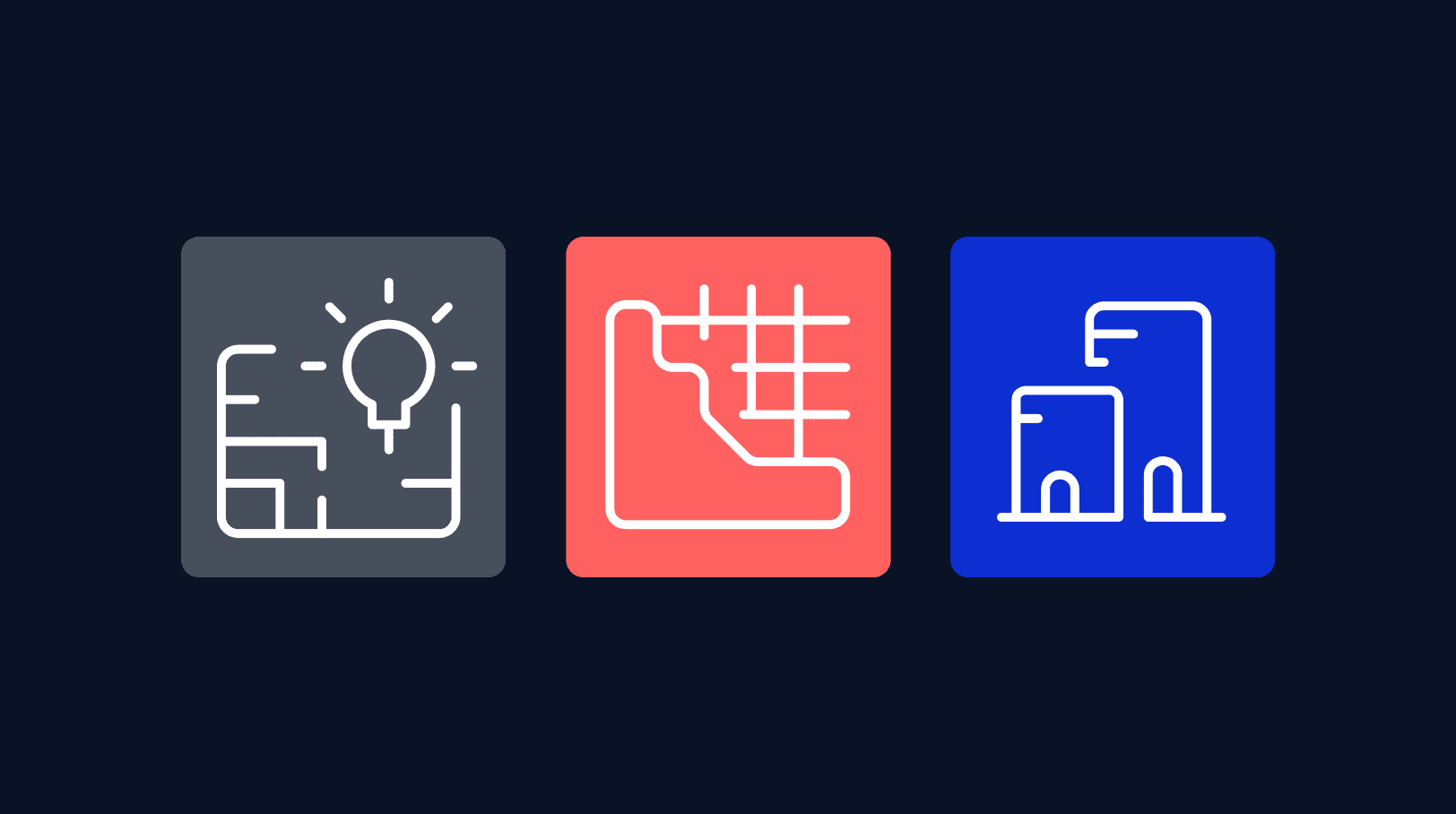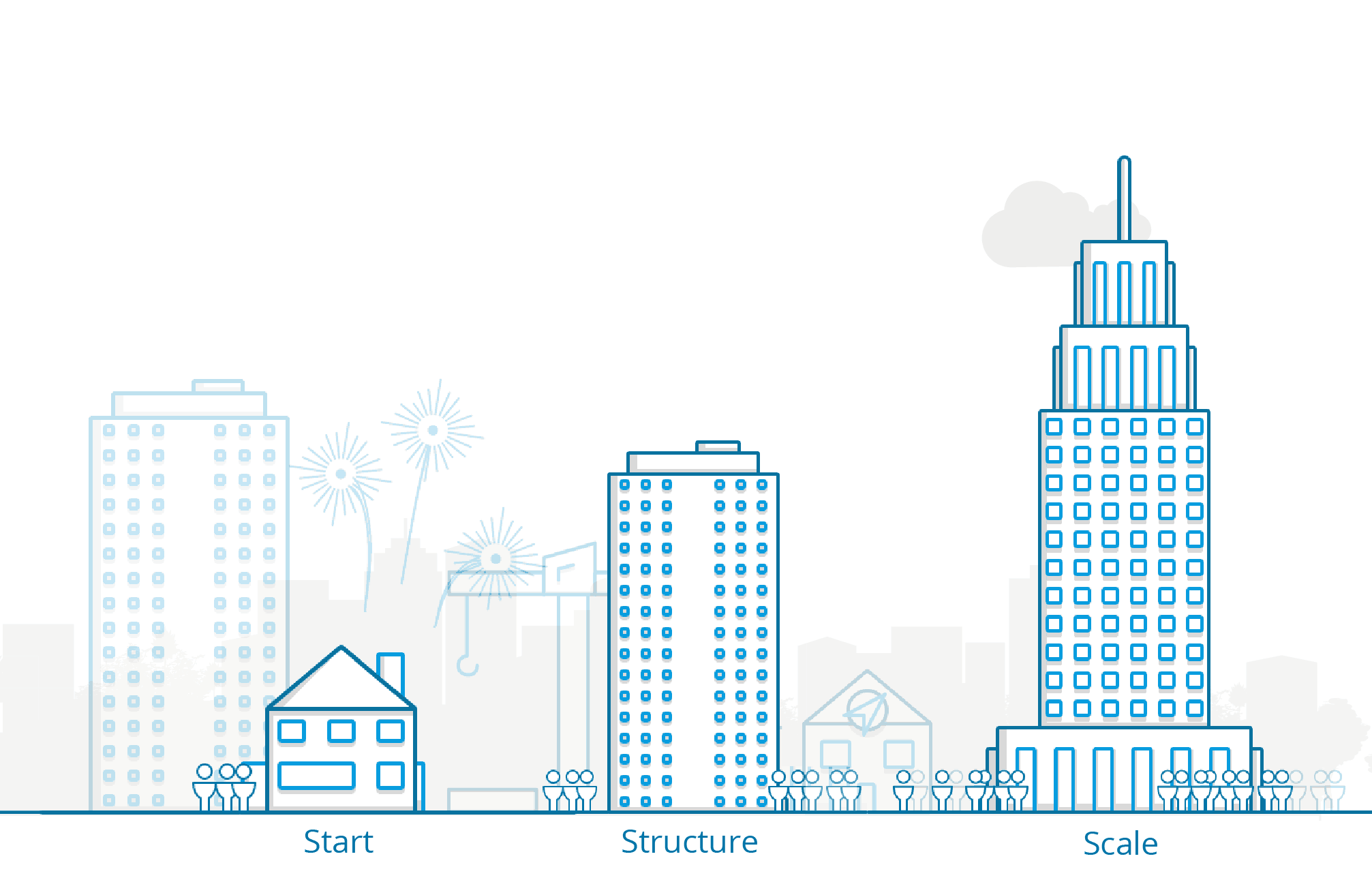A Digital Transformation Framework: Start, Structure, Scale

There’s no question that organizations need to transform themselves for the digital era—and fast. A recent McKinsey survey found that 65% of companies are increasing funding of digital and tech initiatives to keep up with a changing world. The process of incorporating these initiatives is known as digital transformation.
To make sure that initiatives succeed, businesses need to have a digital strategic framework in place. But it’s not as easy as flipping a switch. In this post, we’ll walk through each of the three phases of digital transformation: Start, Structure, Scale.
What is a Digital Transformation Framework?
If digital transformation is the process of incorporating digital technologies that can help a business succeed, a digital transformation framework is the roadmap to success. According to eWeek, a digital transformation framework is “a step-by-step plan for successfully implementing a digital transformation strategy.” The framework follows three phases: Start, Structure, Scale.

The First Phase: Start
The Start phase is all about beginning small and gaining broader support for your digital execution program by proving the value of your new approach. This phase celebrates the success of your first initiatives, generating internal PR.
You want your first project to have a WOW factor that generates business value so it can be a catalyst for additional projects and spread buzz throughout the company. As Plautus said, “One eye-witness weighs more than ten hearsays – Seeing is believing all the world over.” This is why it is important to pick the right first projects. In addition, you want to ensure the necessary prerequisites are in place, including:
- Infrastructure
- Business case
- The right stakeholders and team
The Second Phase: Structure
As you move to the Structure phase, you begin to focus on formalizing your team and strategy to accelerate digital execution.
In this phase, building out your team, identifying training needs, and deciding on a sourcing strategy are key objectives. It is also important to formalize the methodology used during the first projects to make success replicable.
As the number of applications grows, other topics become important, such as: implementing DevOps to enable fast, continuous delivery and focusing on governance and architecture to ensure your apps are maintainable and compliant.
The Third Phase: Scale
The Scale phase is all about applying greater automation to realize the efficiency required to deliver and manage hundreds of applications to become a digital enterprise.
This includes, among other things:
- Automating deployment and maintenance to support a large portfolio
- Introducing quality assurance to proactively monitor the maintainability of projects
- Enabling greater reusability by establishing a private app store
With these capabilities in place, you can maximize value and productivity by creating distributed innovation capabilities throughout the enterprise, with multiple teams developing simultaneously.
Digital Transformation in Action
Dutch company ASML applied the concepts of scale to a T. The company had 11.9B GBP in revenue, with a goal to double that by 2025. As they were in the time-intensive process of building custom apps, they knew they had to accelerate development if they wanted to achieve their goal. In order to scale quickly, they needed to do more than just recruit workers. They also had to find a way to optimize the process to make teams more productive.
Using Mendix’s App Factory framework gave ASML the opportunity to grow operations by developing apps at scale. Not only was the framework a successful digital transformation tool, but it also provided a detailed overview of the steps they needed to take. “In collaboration with Mendix,” said Roy Coenders, manager of Shared Service at ASML, “We learned to focus on things in the right priority.”
As a result, the teams at ASML were able to develop five apps quickly, with one of the apps taking just two and a half weeks.
The Challenges of Digital Transformation
You can’t rush when it comes to your digital transformation framework. If you try to do everything at once and immediately focus on scale, you will fail for two reasons:
It’s too much to swallow at once
The organization simply cannot manage that much change at once. The sheer size of the initiative will inevitably force it to stall.
Change is too disruptive without proof
People are only so willing to change based on hypothetical situations. They need to see proof with their own eyes before committing to large-scale change.
It’s exactly for these reasons that we created our Digital Transformation Roadmap. Drawing from our experience working with hundreds of customers, this digital transformation framework is designed to help organizations do the right things at precisely the right moment, guiding them through three distinct phases of transformation: Start, Structure, and Scale.
Digital transformation is all about timing, both in terms of not doing everything at once but equally important, not doing certain things too late. For instance, if you forget to address governance in the Structure phase, you’ll create a mess later on that’s costly to clean up and hinders further development.
We’ve guided hundreds of customers on the path to digital transformation with low-code application development, and best practices to help your organization focus on the right things at the right time. For more information on how to become a digital enterprise, contact us or explore more of our digital transformation resources.
This article was originally published on April 18, 2018 but has since been updated.